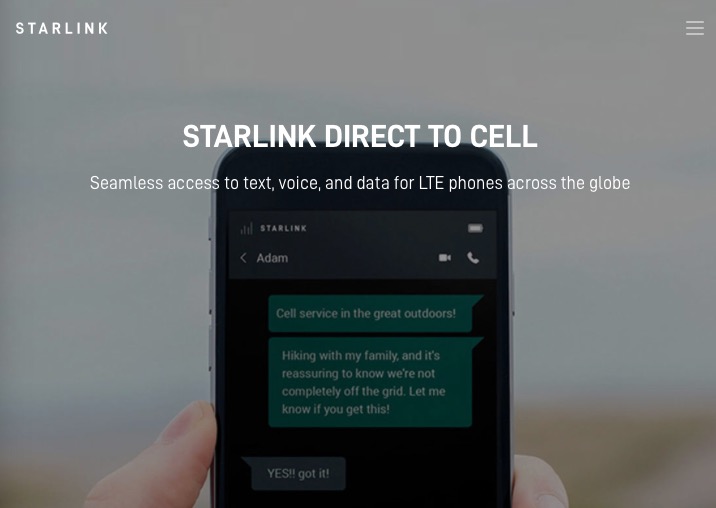
SpaceX Details Starlink Direct to Cell Service

SpaceX has launched a new website to elaborate on its upcoming “Starlink Direct to Cell” service, aiming for a comprehensive rollout by 2025.
The website, unveiled on Tuesday (via PCMag), states that the service will offer “ubiquitous access to texting, calling, and browsing” across various terrains including land, lakes, and coastal waters. According to the website, text services will begin in 2024, followed by voice and data in 2025. IoT connectivity is also slated for a 2025 launch. The service is designed to work with existing LTE phones without the need for any hardware or firmware changes.
Before the service can be officially launched, SpaceX must secure approval from the Federal Communications Commission (FCC). The company is lobbying for swift clearance to use the necessary radio bands, facing opposition from other companies such as Dish Network and Apple partner Globalstar.
The Starlink Direct to Cell service is poised to compete with Apple’s satellite-based Emergency SOS feature and AST Space Mobile’s similar offering.
The Starlink website provides further technical details, stating that the satellites will be equipped with an “advanced eNodeB modem,” effectively serving as a “cellphone tower in space.” This will allow for network integration similar to standard roaming partners. The service aims to eliminate connectivity dead zones, particularly in remote regions.
SpaceX plans to leverage its expertise in rocket and spacecraft manufacturing to deploy these Direct to Cell satellites at scale. Initial launches will be carried out using SpaceX’s Falcon 9 rocket, followed by the Starship.
Once in orbit, the satellites will connect over laser backhaul to the existing Starlink constellation to provide global connectivity. The company is also seeking partnerships with other cellular providers and has included a contact form on the new website for interested companies.
The website lists the following global partners so far for the Starlink direct to cell service:
- T-Mobile (USA)
- Optus (Australia)
- Rogers (Canada)
- One NZ (New Zealand)
- KDDI (Japan)
- Salt (Switzerland)

